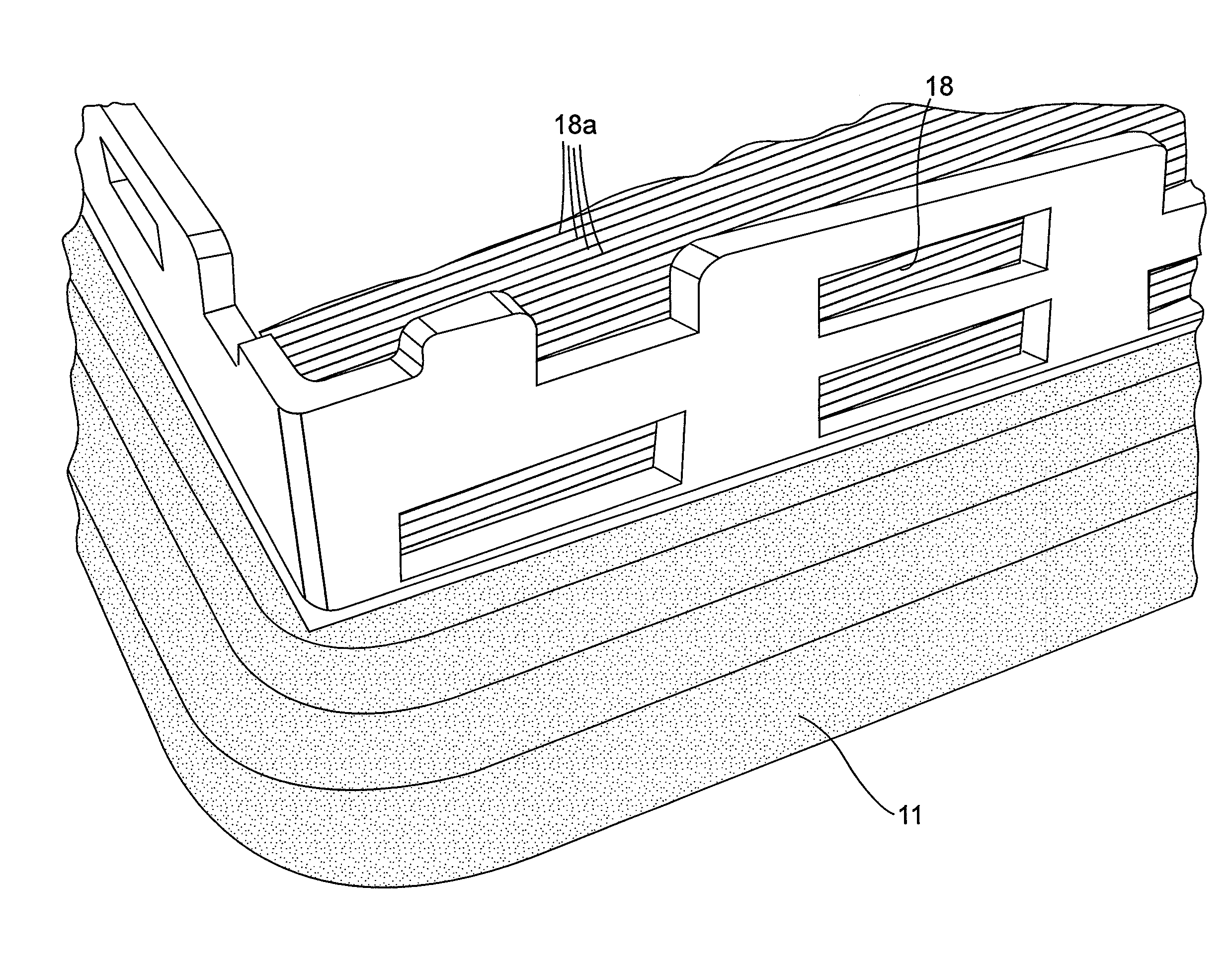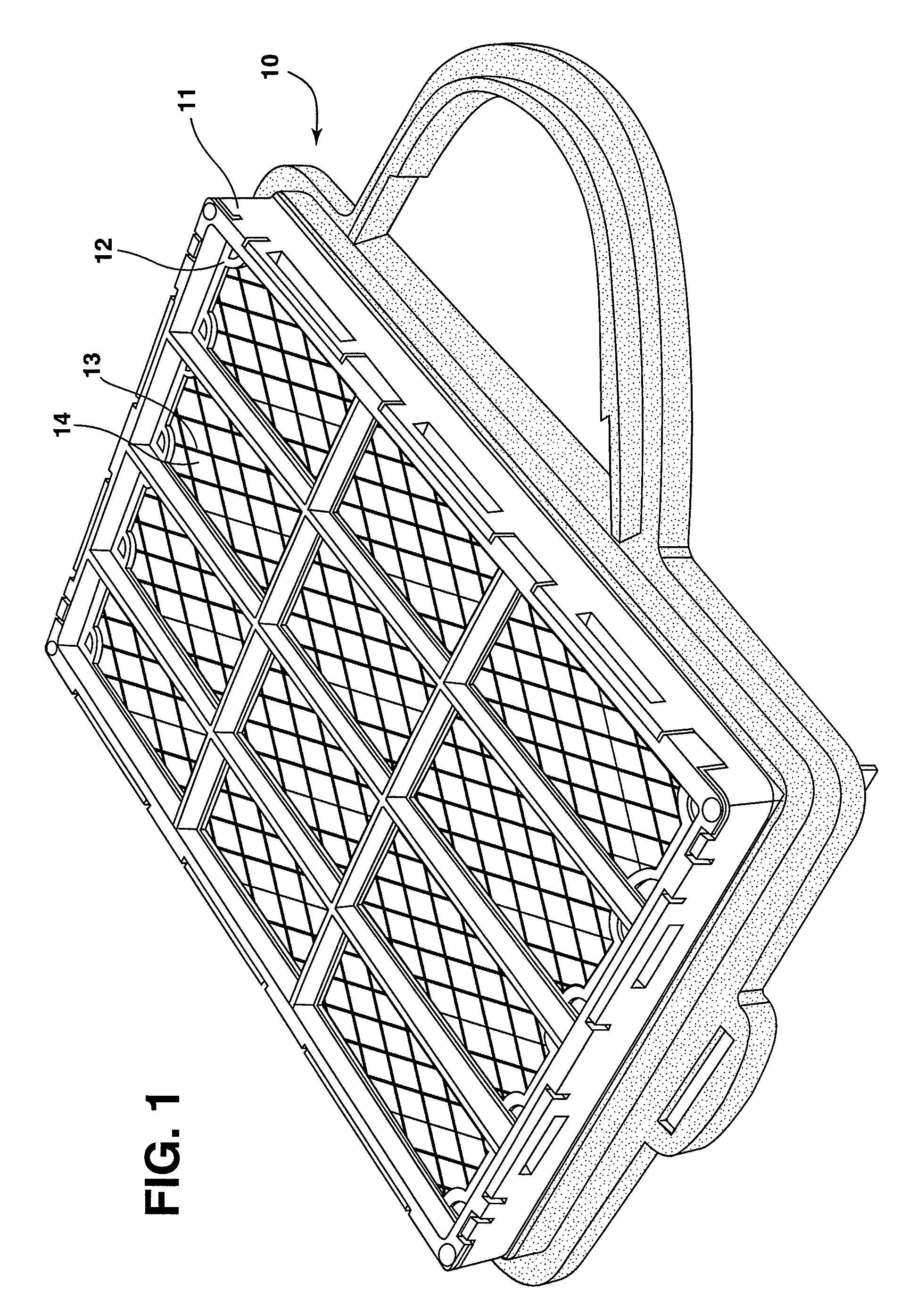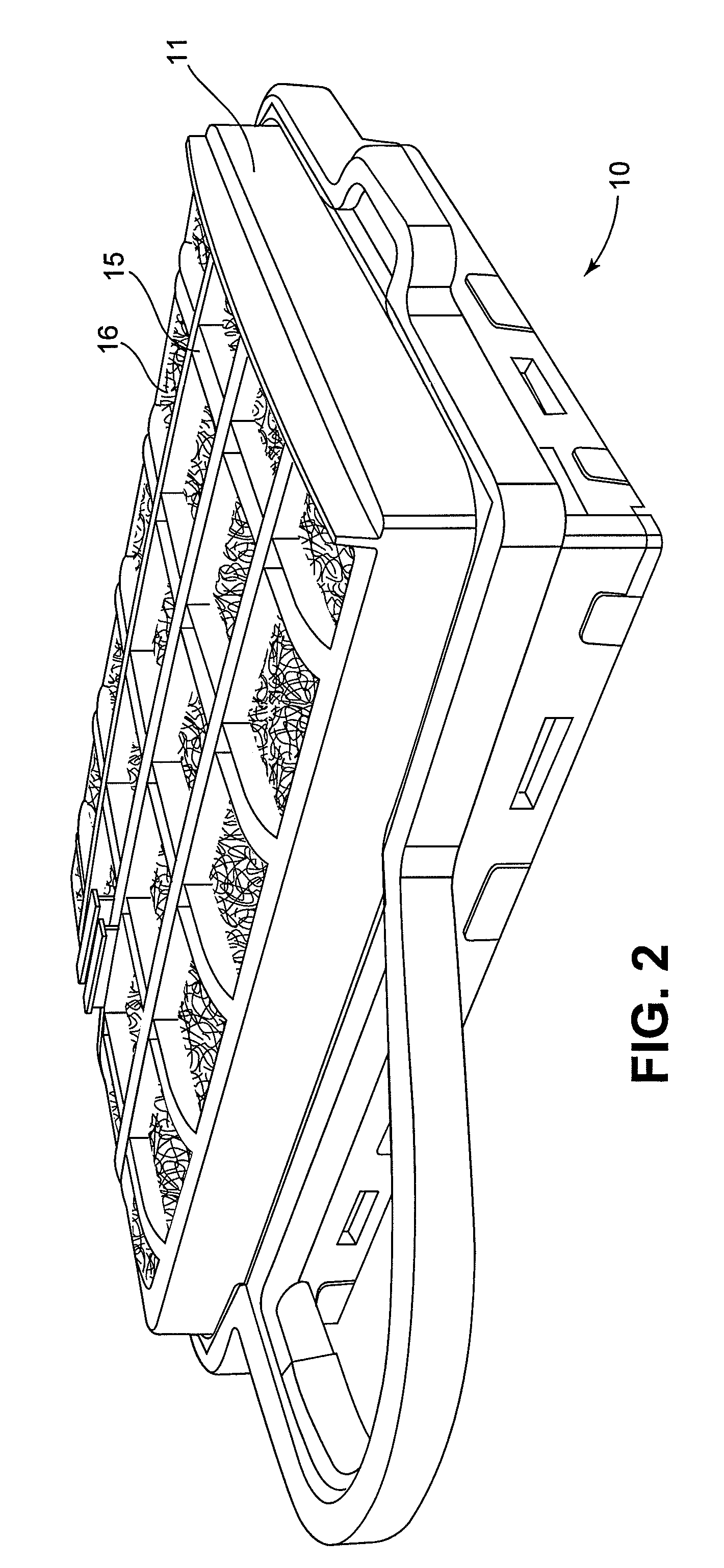Filter element and method
a filter element and filter element technology, applied in the field of filter elements, can solve the problems of significant gas flow contamination, prior art filtering for e.g. diesel engines cannot solve, and no filter element suitable for use, etc., and achieve the effects of low solidity, high loft, and high porosity
- Summary
- Abstract
- Description
- Claims
- Application Information
AI Technical Summary
Benefits of technology
Problems solved by technology
Method used
Image
Examples
example 1
[0124]Wet-laid filter media were prepared according to the following technique. Glass and synthetic fibers were dispersed separately in 1 L water where the pH was first adjusted to about 3 using sulfuric acid. The fibers were slurried by blending in a Waring 2 speed blender (model # 7009G, available from Waring Products of Torrington, Conn.). The fiber slurries were then diluted to a total of 5 L with 4 L of water and blended for an additional 2 minutes or more. The mixed slurry was transferred to a standard a Formax 12×12 inch G-100 handsheet mold (available from Bescorp Inc. of Dover, N.H.), in which a carrier sheet of Reemay 2200 (available from Fiberweb plc of Old Hickory, Tenn.) was positioned. The sheet was carefully flooded so as to ascertain that no air bubbles were entrained. The water was then drained from the slurry. The wet sheet was dried and bonded using an Emerson Speed Dryer, Model 135 (available from Kalamazoo Paper Chemicals of Richland, Mich.) flat sheet dryer at ...
example 2
[0126]Air laid filter media of the present invention were obtained from Tangerding Bocholt GmbH of Bocholt, Germany. Tangerding reference number TB 180-T05 is referred to as FM-3 (Filter Media 3) in this and the following Examples. Tangerding reference number FF 320-T05-2 is referred to as FM-4 in this and the following Examples. And Tangerding reference number FF 180-T05-4 NP-0256 / 2 is referred to as FM-5 in this and following Examples. Composition of air-laid filter media, FM-3, FM-4, and FM-5 are shown in Table 2. Also shown in Table 2 are basis weight, thickness at two different pressures and the fraction of the thickness compressed between the two pressures, calculated XY pore size, and permeability for air laid filter media FM-3, FM-4, and FM-5.
TABLE 2Composition and properties of experimental air-laid filter media.PropertyUnitsFM-3FM-4FM-5Composition(none)24 um polyester16.7 um polyester16.7 um polyesterbicomponent +bicomponent +bicomponent +polyesterpolyesterpolyesterBasis w...
example 3
[0127]Filter media from the examples above were cut into rectangular sheets 21.6 cm×14.5 cm. The sheets were layered to form a filter element. The filter elements were enclosed in a housing having a perforate support on both sides, as can be seen in FIGS. 1-4. A housing, support, and filter element together form a filter structure. The filter structures were constructed using multiple layers of filter media as shown in Table 3. The media was backed on the downstream side with an expanded metal mesh in a diamond pattern, as is seen in FIG. 1. The media was compressed to 3.4 cm between the perforate supports at the upstream and downstream ends of the filter structure.
[0128]A control filter structure, FStr-CTRL, was obtained for comparison in testing to FStr-1, -2, and -3 in Example 4, below. FStr-CTRL is a filter marketed for use in diesel engines and is available as Part No. SO40029 from the Donaldson Company, Inc. of Minneapolis, Minn.
TABLE 3Filter structures formed from layersof fi...
PUM
| Property | Measurement | Unit |
|---|---|---|
| pore size | aaaaa | aaaaa |
| diameter | aaaaa | aaaaa |
| pressure | aaaaa | aaaaa |
Abstract
Description
Claims
Application Information
 Login to View More
Login to View More - R&D
- Intellectual Property
- Life Sciences
- Materials
- Tech Scout
- Unparalleled Data Quality
- Higher Quality Content
- 60% Fewer Hallucinations
Browse by: Latest US Patents, China's latest patents, Technical Efficacy Thesaurus, Application Domain, Technology Topic, Popular Technical Reports.
© 2025 PatSnap. All rights reserved.Legal|Privacy policy|Modern Slavery Act Transparency Statement|Sitemap|About US| Contact US: help@patsnap.com



